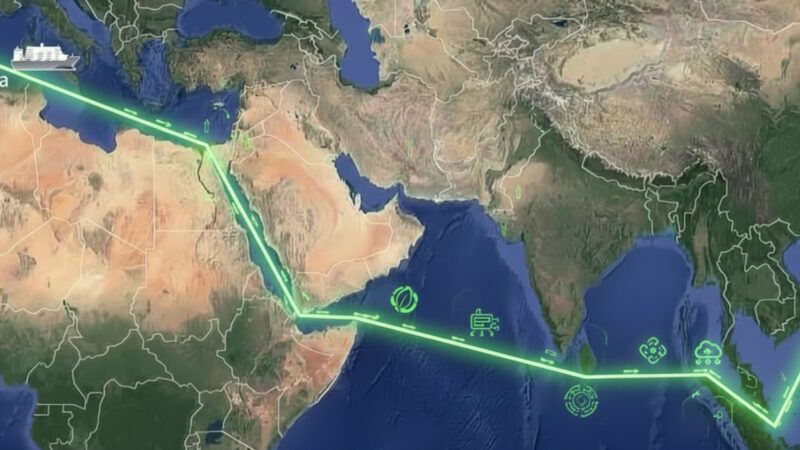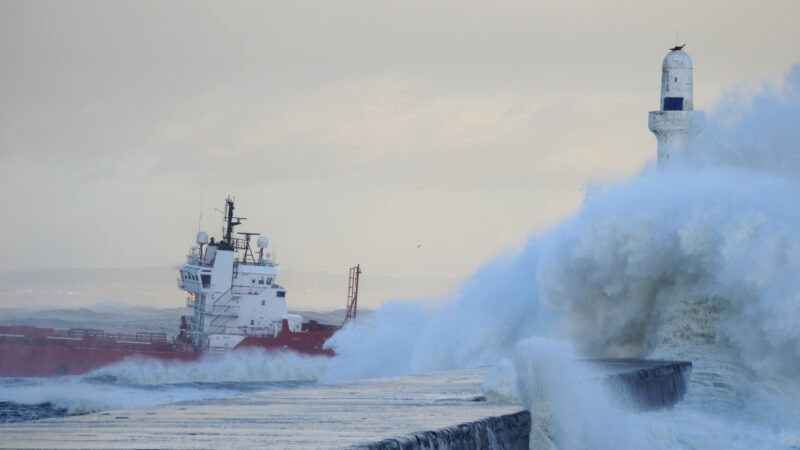Six corridors by the middle of this century
The main objective of the Clydebank Declaration (a non-binding declaration of intent) is to establish at least six green corridors between two or more ports by the middle of this century and to increase this number over the next few years.
For operators, participation is voluntary, and it is not mandatory for all vessels to be zero-emission in order to transit a green corridor. A willingness to evaluate the objectives achieved in 2025 was also stipulated in writing.
In order to create these more sustainable corridors, signatory countries are expected to encourage the creation of partnerships between states, ports, companies and all operators along the value chain. This is the only way to accelerate decarbonisation in the sector.

"The Clydebank Declaration proposes to facilitate the establishment of alliances in which the different agents involved in this process participate," the Spanish Shipping Association (ANAVE) points out. "Initiatives such as this serve to raise awareness and involve all the actors involved and help speed up the process."
The challenges, also at a technical level
In this context, cooperation and support for the most pioneering initiatives in the use of renewable technologies is essential. "Shipping companies are well aware that it is necessary and urgent to evolve towards carbon-neutral maritime transport, something that can only be achieved with the development of a new generation of technologies and fuels that do not exist today," ANAVE said.
According to the association's spokespersons, batteries or fuel cells for propulsion on very short routes could be a solution for the establishment of a first green corridor in a few years. In addition, liquefied natural gas makes it possible to eliminate pollutant gas emissions already today. And, when the supply is available, biofuels could help reduce the carbon footprint.
"There are also various energy efficiency measures that companies have been implementing for many years now," they explain. "These help to reduce emissions and, not least, fuel consumption, one of the main cost items for shipping companies.”
However, as ANAVE points out, once new solutions are developed, even greater challenges will arise: generating enough renewable energy to power ships; creating a new land-based infrastructure for the manufacture, supply and handling of these fuels; and developing completely new training programmes and safety procedures, for example.
"An enormous task for an industry that is almost exclusively dependent on fossil fuels and mostly composed of small and medium-sized enterprises with no experience in technology development," they conclude.
22 candidates to promote green corridors
To date, 22 countries around the world have signed the Clydebank Declaration. The list includes Australia, the United States, Canada, Japan, New Zealand and many European countries, including Spain. There are also Morocco, Costa Rica and Chile, the only representatives from the African continent and Latin America.
"Many are missing in this declaration," ANAVE points out. "Maritime transport is an international sector, which must be regulated at a global level by the IMO [International Maritime Organisation]. The more states involved in the process of decarbonisation, the sooner the objective will be achieved.”
However, the plan to create these green corridors is not the only one that seeks to accelerate the development of new technologies and fuels that are more environmentally responsible. Another example, according to ANAVE, is that promoted by the International Chamber of Shipping (ICS).
"This organisation has proposed the creation of an R&D Fund endowed with 5,000 million dollars and financed by the shipping companies through a mandatory contribution for each tonne of fuel consumed by the ships," they explain. "And there are other initiatives to the same end. Each of them will do their bit to achieve this goal.”
Want to know more?
España firma la Declaración de Clydebank para la creación de corredores marítimos ‘verdes’
The Next Wave: Green Corridors
Clydebank declaration for green shipping corridors
 The Clydebank Declaration aims to create green shipping corridors, free of greenhouse gas emissions, between two or more ports around the world. (GettyImages)
The Clydebank Declaration aims to create green shipping corridors, free of greenhouse gas emissions, between two or more ports around the world. (GettyImages)
 The Clydebank Declaration aims to create green shipping corridors, free of greenhouse gas emissions, between two or more ports around the world. (GettyImages)
The Clydebank Declaration aims to create green shipping corridors, free of greenhouse gas emissions, between two or more ports around the world. (GettyImages)







